I came across a fascinating story a while ago, and reproduce it here verbatim :
“ Anthomalousa was a Queen from Roman Sougia, whose legend was not recorded
anywhere, but it was handed down from generation to generation. Two engineers
of that time had undertaken the building works of that area. One would bring the
water from very far away, and the other would make the roads. Both of them fell
in love with Anthomalousa. She could not choose between them, so she promised
to marry the one who would finish the job earlier. They finished at the same time
and she, being unable to choose between the two, drowned herself in a lagoon at
a place called Pefki to the east of Sougia. That area is now called Anthomalousa.”
Further research told me that both young men worked hard on their projects, with half the village supporting and helping one suitor, and half the other. When the race to finish ended identical, there was fear of a duel, and a threat of serious conflict and civil unrest between the villagers. Anthomalousa, “beautiful with long blond hair,” and who loved both men equally, made her fateful decision ….. “ and was lost forever in the deep blue waters of the Libyan Sea …”
A Greek tragedy ….
And while trying to find more about Pefki, I found :
“ The second little bay along the coast to the east of Sougia is the lagoon of Pefki
where Anthomalousa, the Queen of Sougia, drowned herself. To the west of Pefki,
among grey, peculiarly shaped rocks, is the Lake of Sougia. Its salty water is
hotter towards the bottom and cold on the surface. Tradition says that this water
is therapeutic. It can heal rheumatism, and sterile people can have children if they
bathe in it. The elders talk about several people being healed.”
And so, of course, I had to go and Explore ….
To reach Pefki, you need to walk east from Sougia along the E4 path for around an hour, to a distinctive threshing circle, where a sign directs you down a waymarked (red) trail to the coast, a further fifteen minutes. The hardest thing about this walk is finding the way out of Sougia !
Signs recently erected (by the Sougia Business Association – mysougia.com -) take you north from the village, on tracks which then loop round to rise south, back towards the sea. From the sea-front follow the road west/left of the river to the sign indicating Pefki 3.5 km.
For those who know the area, there’s a more direct way (marked on the Anavasi 11.13 Crete Hiking Map) ; from the ‘car park’ at the far end of Sougia’s ‘promenade’, cross the river, and then turn left inland. Old E4 signs take you in front of, then left of a house (with a fierce but enclosed dog …) to a rocky path climbing through crags. Where it meets the track, and a sign to ‘Polyphemus Cave’, turn right.
Either way, hopefully, will bring you to the headland, at only 150m but which seems higher, with views back over Sougia and ahead to Pefki, the central of the three inlets ahead.
Now all is straightforward, the E4 trail heading intially downhill. In April, the odour of rotting meat indicated the presence of many pathside Dragon Arums (Dracunculus Vulgaris), with the smell emanating from the dead flies attracted, trapped and eaten by these insectivorous plants.
The threshing circle is unmistakable, as is the route leading down to Pefki. You can spend a pleasant hour or more here, wandering (with care) over the rocks, and – heading slightly left, locating the “lake”.
Access to the sea for swimming is not easy, but it’s usually possible to immerse and relax in the salt water lake, enjoying and soaking in its therapeutic powers.
Return to Sougia is by the same route. On the way, a chance to reflect on events, legendary or otherwise, from two thousand years ago.
Remains of the water system can still be seen on the outskirts of Sougia, whilst the tortuous roads over from Chania give a challenging drive or an adventurous two-hour ‘bus journey.
It’s worth noting that both Captain George and Captain Yiannis in Sougia offer a taxi-boat service to Pefki ; look for posters or ask in the village.

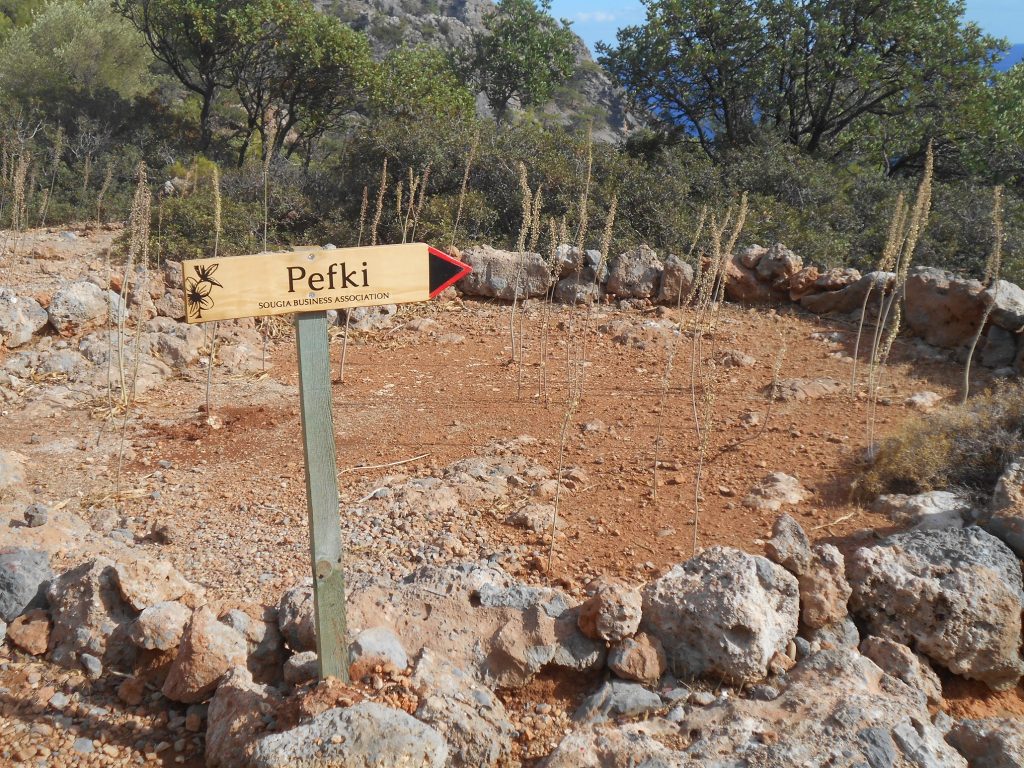
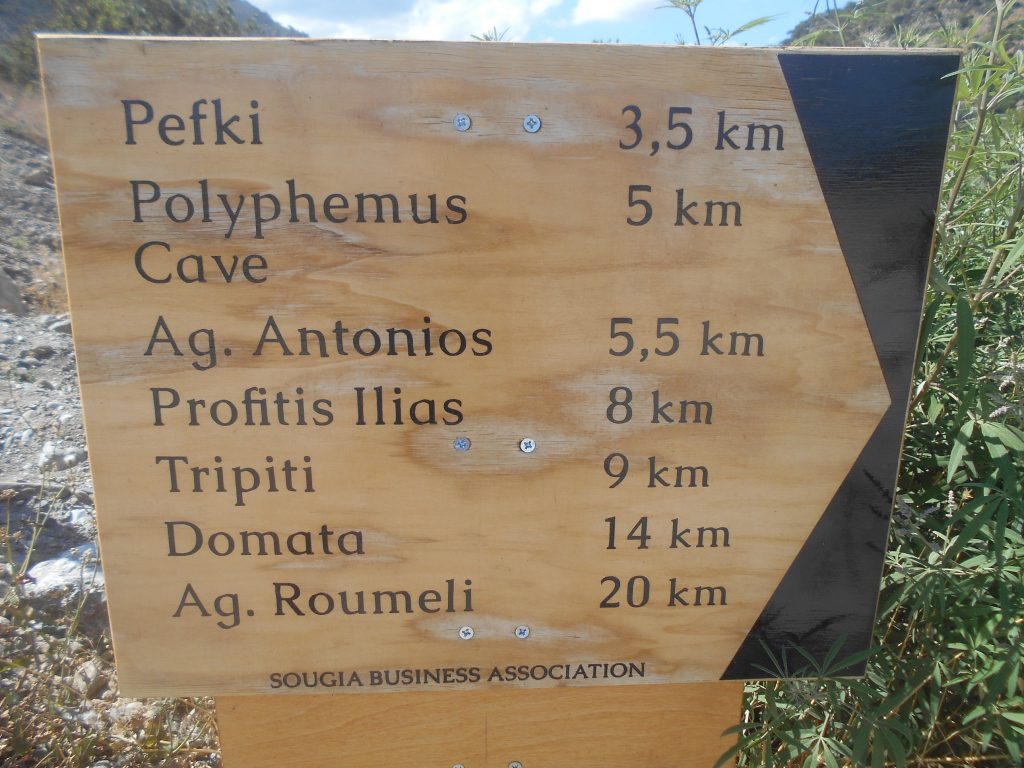
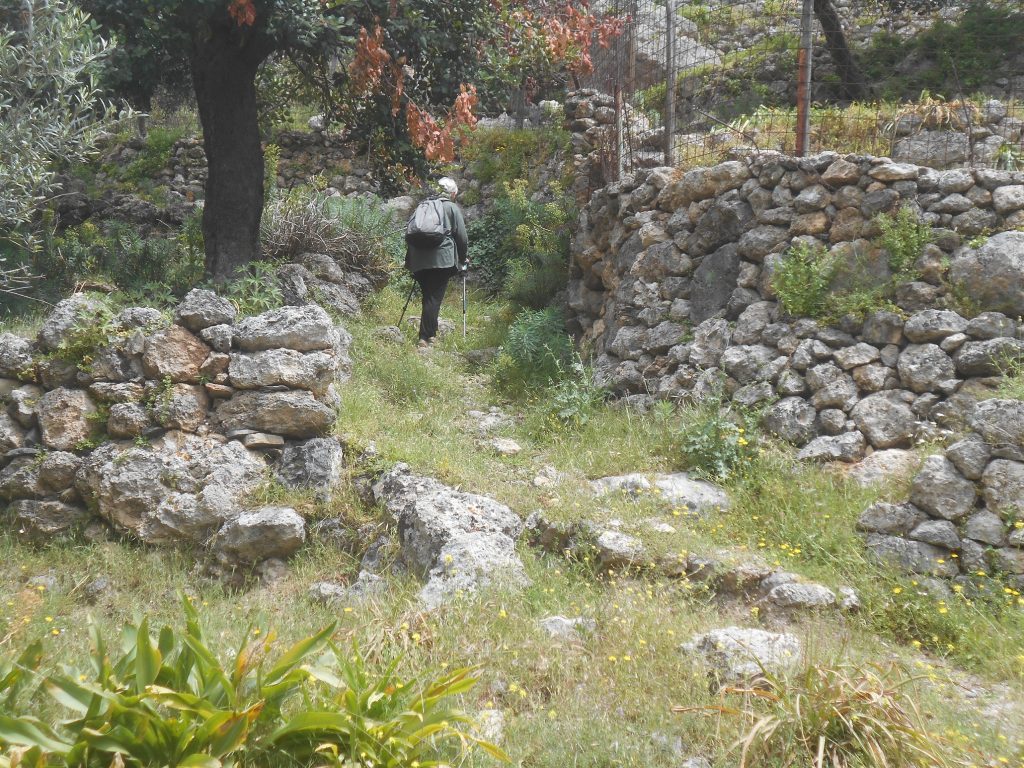
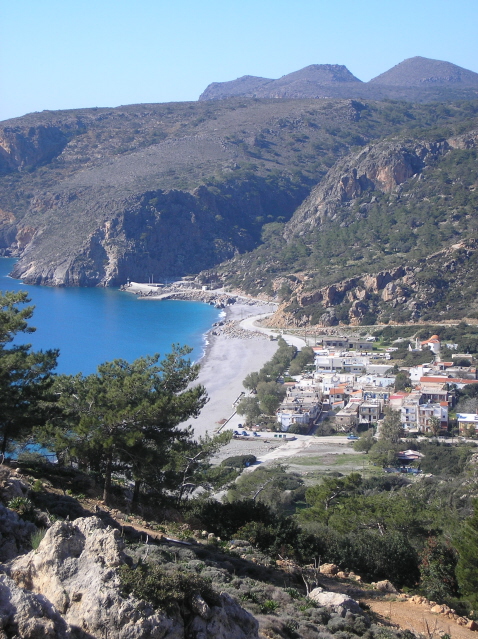
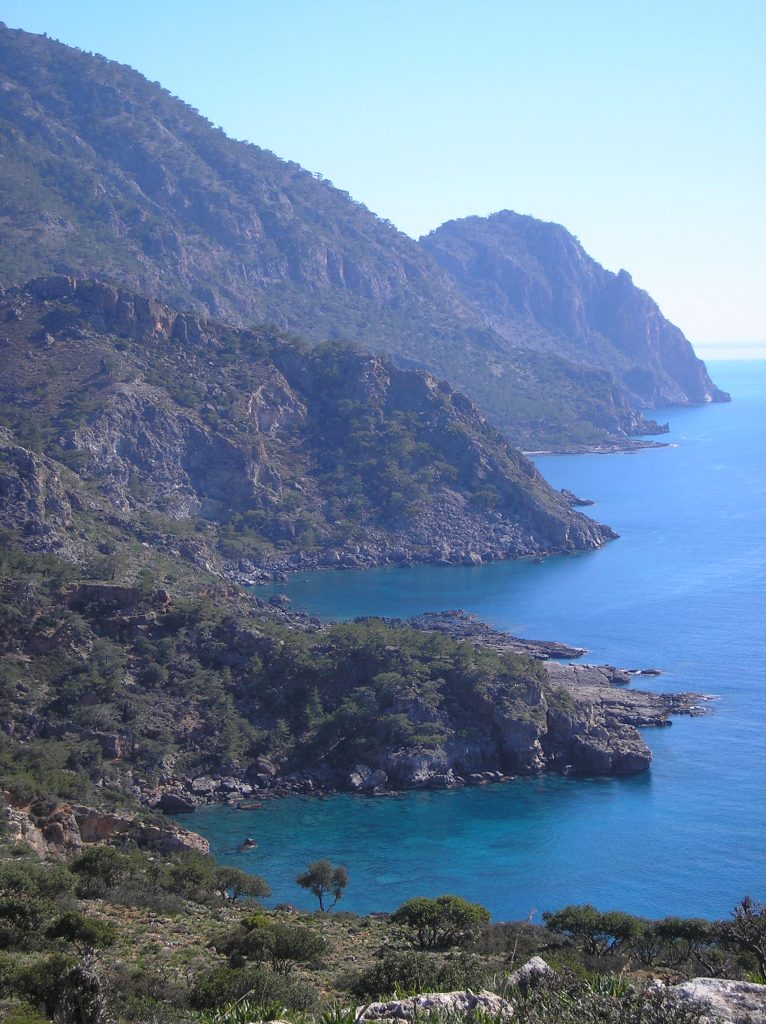
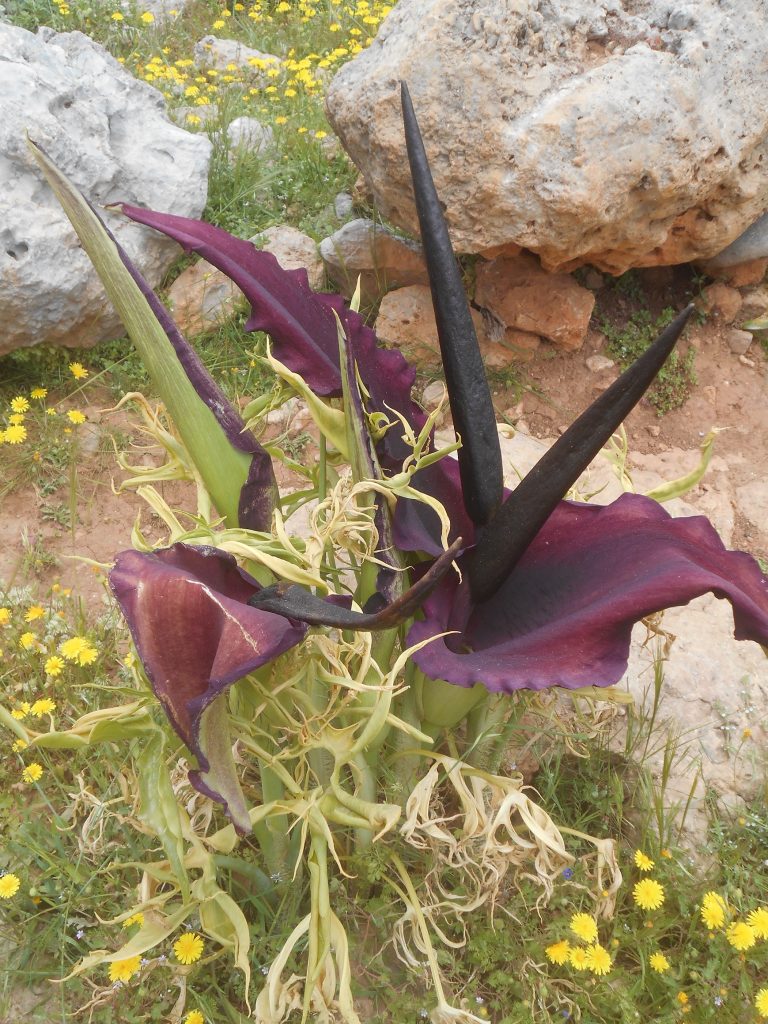

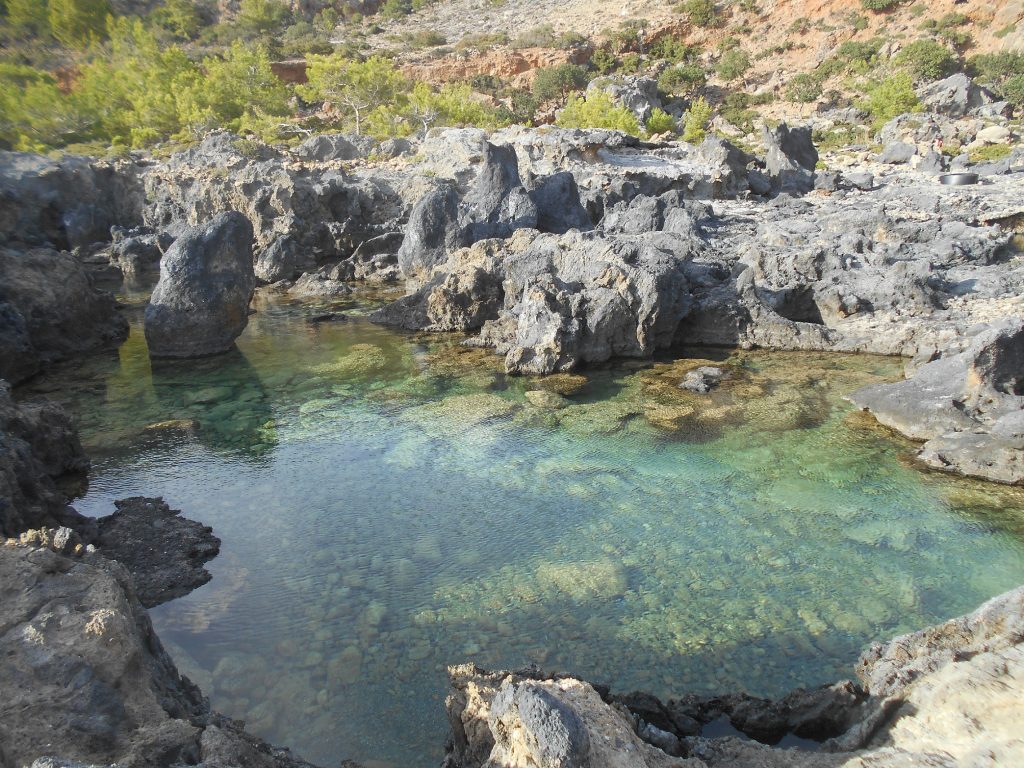
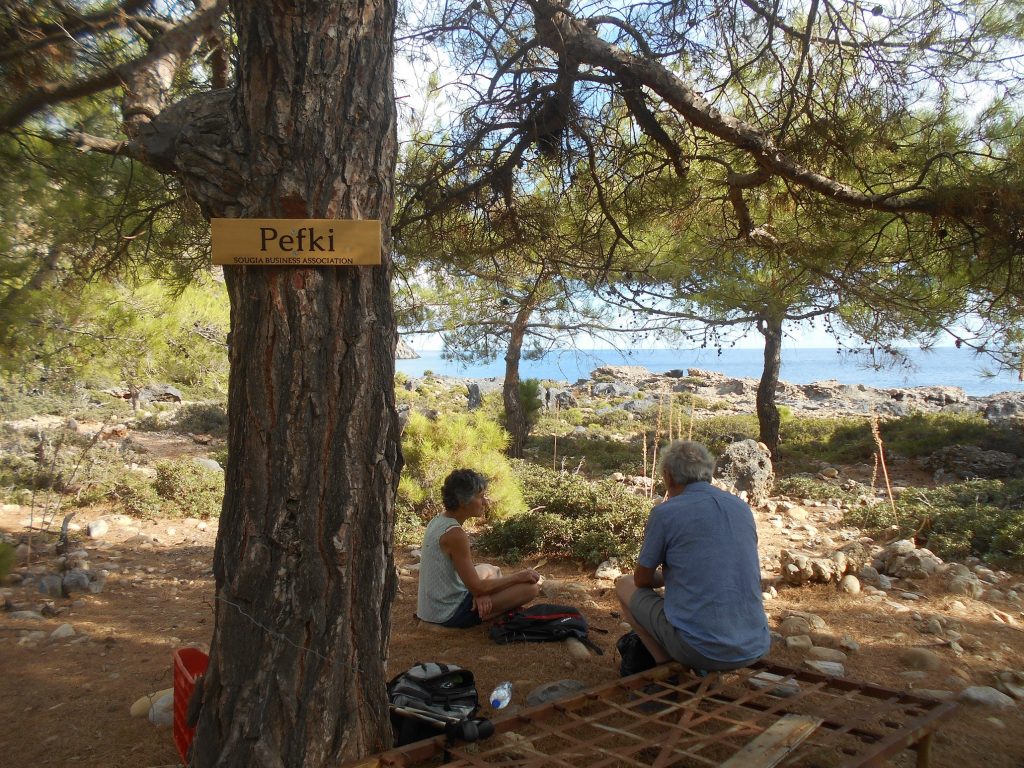
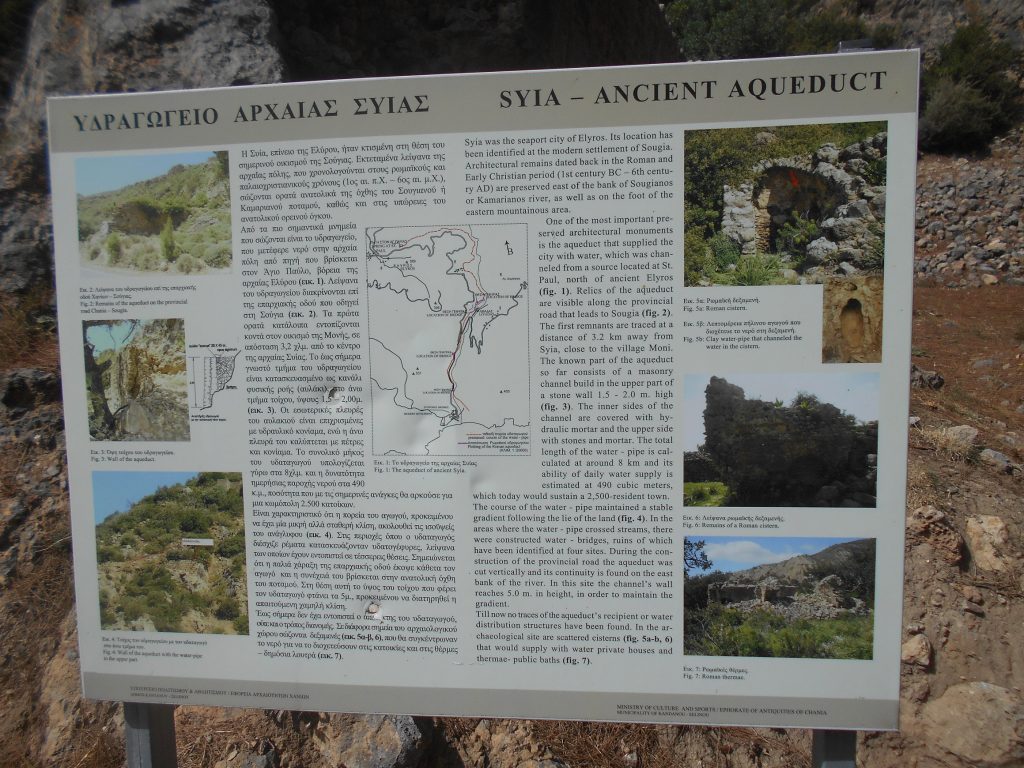
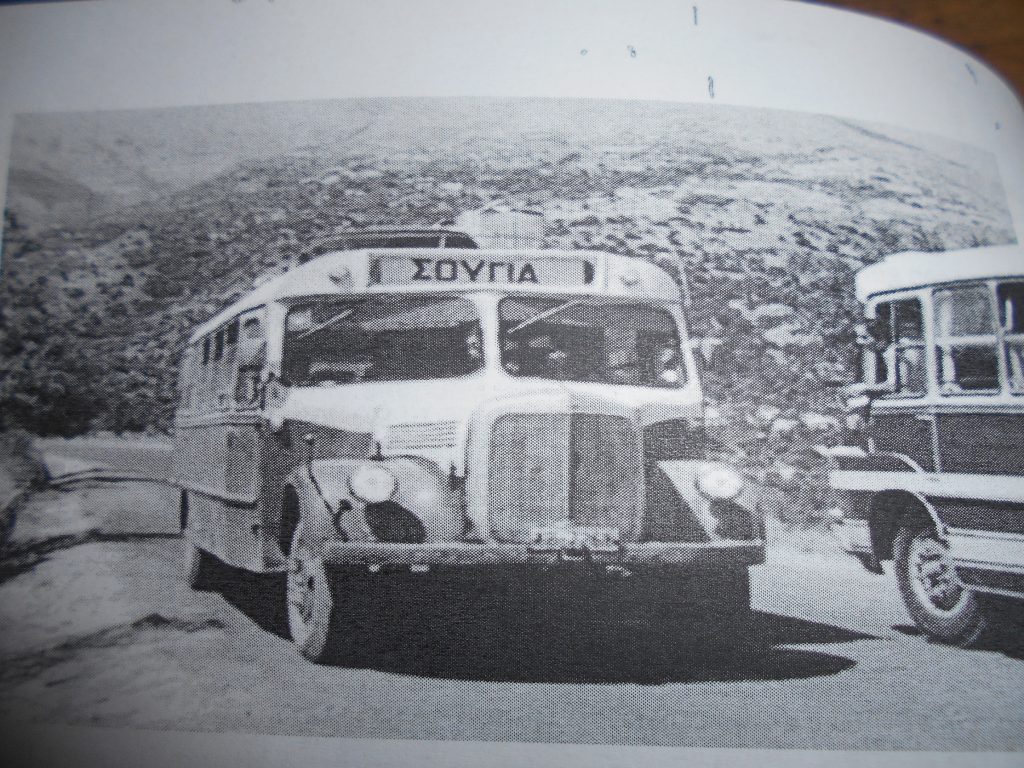
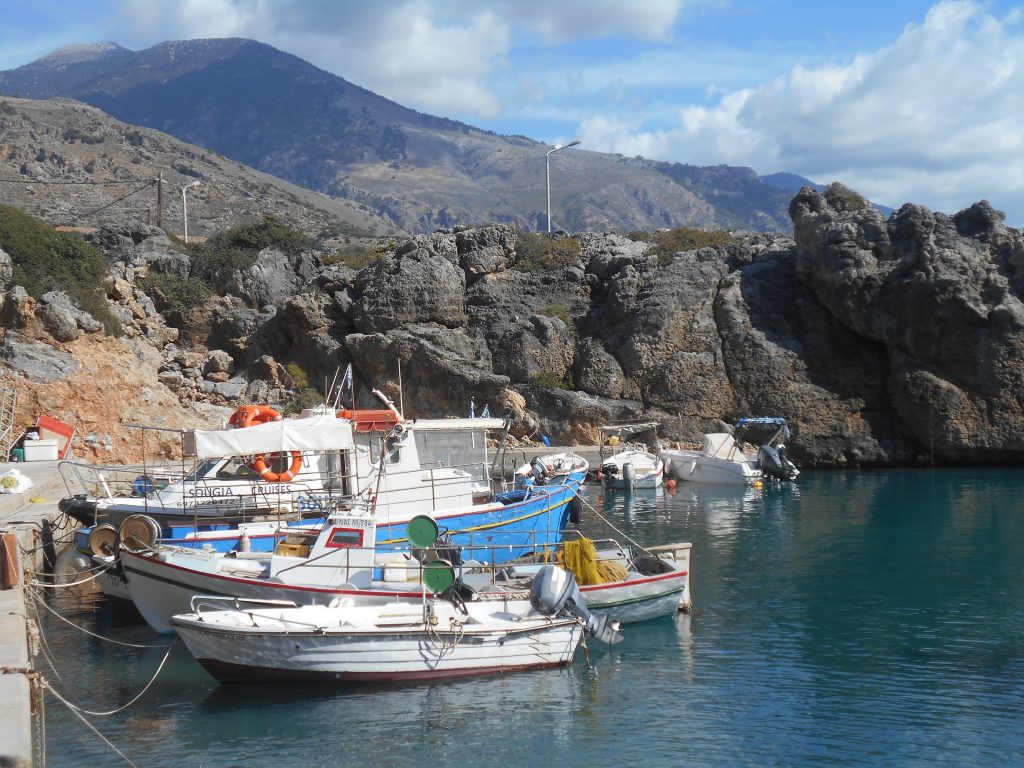

Recent Comments